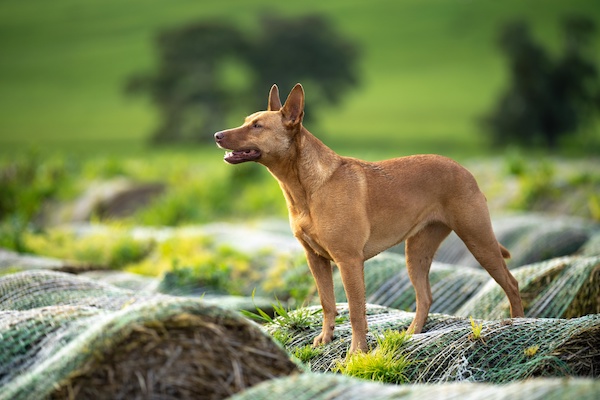
The Australian Kelpie just might be one of the hardest working breeds in dog business, to paraphrase an old quip.
And people who relied on their dogs to perform a job usually cared more that the dog do the job than what color he or she was while doing it. That said, there are ten possible color variants in this breed, but only seven are acknowledged as acceptable in most hostandards. The Kelpie’s AKC breed standard lists as accepted colors black, black and tan, red, red and tan, fawn, chocolate, and smoke blue. Two other colors exist, but aren’t accepted in most breed standards: Fawn and tan, and blue and tan.
A terrific “gallery” of colors in the breed can be seen at the top of this page, and the page owner does a great job of explaining the genetics of the colors. It’s a big topic, and in this post, we narrow down the discussion of color in the Kelpie to red.
Why red?
Because for most of the 20th and 21st century, it was presumed that Kelpies had dingo in their genetic makeup because of similarities in phenotype.

Image: Working Kelpie on a ranch by Phoebe/AdobeStockPhoto alongside the photo of a Dingo by Andrew Haysom/iStockPhoto
Kelpie owners, of course, can immediately tell the difference between a dingo and a red Kelpie (and for anyone wondering, the dingo is on the left), but less discerning eyes of the past literally saw red, along with prick ears, a long muzzle, and a similar body shape.
Dingo in the Kelpie. Was it bush folklore?
To answer this, the Australian Research Council, AgriFutures Australia and the Working Kelpie Council funded a genomic study at the University of Sydney in 2019. Professor Claire Wade, a co-author of the study’s paper (published in the journal Genes) reported no detectable dingo DNA in the Kelpie.
That said, she added, “I think it’s much more likely that the dingo had kelpie in it, than the kelpie had dingo in it.” Others have noted that Professor Wade never said that was no dingo blood in the Kelpie, and others have postulated when farmers abandoned their farms back in the day, they typically left the Kelpies behind. Being social pack animals, the Kelpies ran off with the dingos and integrated.
In Origins of the Australian Kelpie – Exposing the Myths and Fabrications from the Past, author and former champion shearer, Bill Robertson, suggests that dingos may have been purposefully introduced to the ancestry of the Kelpie in the late 1870s when one was bred with a collie at Warrock Station in Victoria. Because of fines imposed on the owners of dogs crossed with dingos, no one admitted to owning such a dog, let alone being part of such a breeding. In the same book, the author shares the test conducted by Professor Allan Wilton, a geneticist specialising in dingo research, and he identified a small percentage of dingo markers in the Kelpie.
We like a good urban (or bush) legend, and the word, “detectable,” in Professor Wade’s report makes it hard to categorically dismiss the presence of dingo in the Kelpie. We always defer to the experts, the owners and breeders of Kelpies. What say you all?
The irony in all this is that on these pages, we often lament the impending threat to a certain dog breeds, but in 2004, the International Union for the Conservation of Nature downgraded the dingo’s conservation status to vulnerable, and dingo experts from the University of Western Sydney predicted Australia’s native canine would go extinct within the next twenty years.
Fast forward to 2021. A study published in Australian Mammalogy revealed that pure dingoes – those with with no detectable dog ancestry – made up 64 percent of wild canines tested, and an additional 20 percent were at least three-quarters dingo. Put another way, 99 percent of wild canines in Australia tested were pure dingoes or dingo-dominant hybrids based on the results from over 5,000 DNA samples of wild canines across the country.
The dingo is doing just fine.
We have strayed from the topic of red Kelpies, and if you are the proud owner of one, we’d love to see their picture!
Top image of a Working Australian Kelpie by Phoebe/AdobeStock
